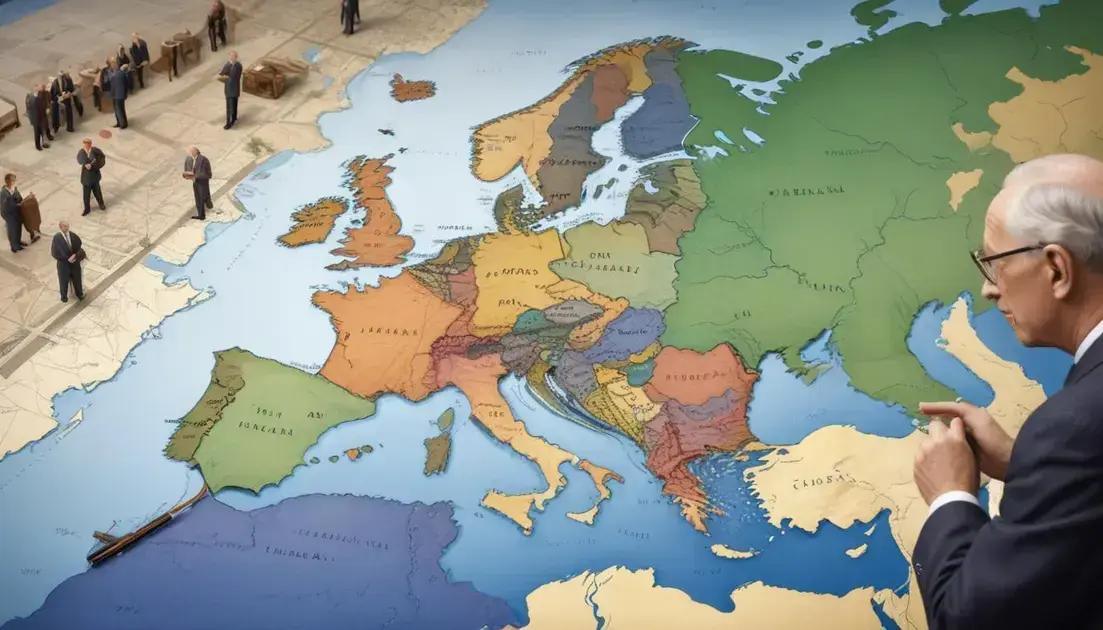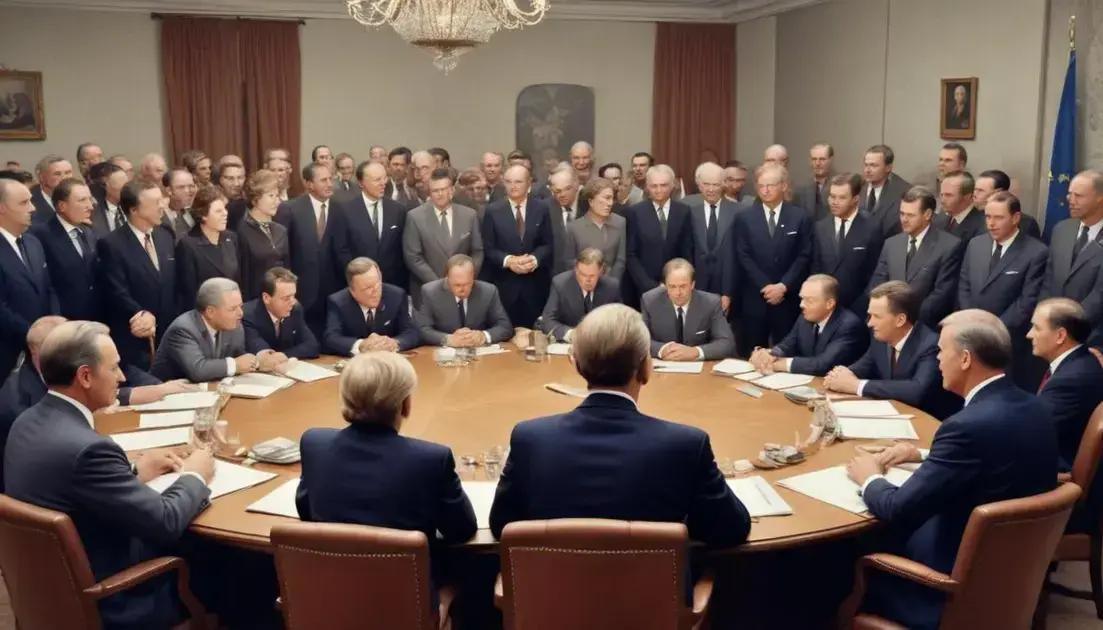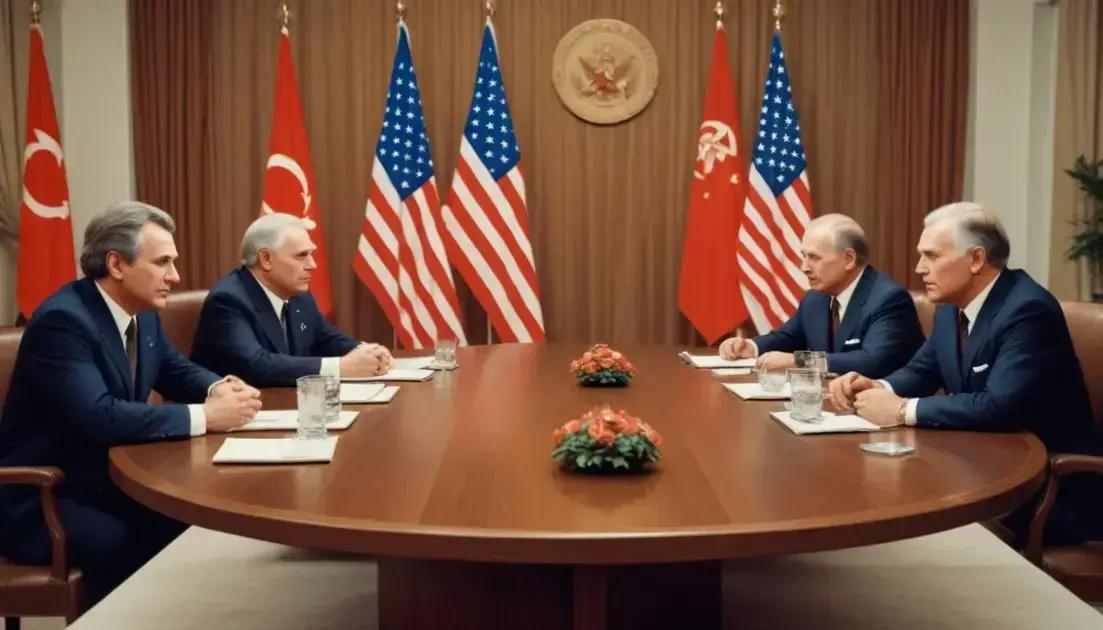
Marshall Plan: Reconstruction and Economic Strategy
The Marshall Plan was a significant U.S. initiative aimed at rebuilding Western Europe after World War II through substantial financial aid. It promoted economic stability, reduced the spread of communism, and fostered cooperation among European nations. The plan enhanced industrial growth, modernized agricultural practices, and laid the groundwork for long-term partnerships, ultimately contributing to the formation of the European Union. Its lasting impact continues to influence European economies today.
Marshall Plan played a pivotal role in reshaping Europe’s post-war landscape. Have you ever wondered how a single plan could rebuild an entire continent? Let’s dive in and explore its fascinating impact.
The origins of the Marshall Plan
The Marshall Plan started after World War II. Europe was in ruins, and many countries faced severe economic struggles. The U.S. wanted to help rebuild these nations. They recognized that a stable Europe was essential for world peace and security.
In 1947, U.S. Secretary of State George Marshall proposed a program to aid European recovery. His idea was to provide financial assistance to help kickstart European economies. This plan aimed to prevent the spread of communism in Europe.
The U.S. Congress debated the plan but ultimately agreed on its importance. By April 1948, the Marshall Plan was officially launched. Over the next four years, the U.S. invested around $13 billion, which is about $150 billion today.
This investment helped countries like France, Germany, and Italy rebuild their infrastructure and economies. It also fostered cooperation among nations, leading to closer ties in economic and political matters.
The success of the Marshall Plan showed how economic support could lead to stability. It laid the groundwork for future alliances, such as NATO. Even today, the Marshall Plan is seen as a significant achievement in U.S. foreign policy.
How the Marshall Plan transformed Europe
The Marshall Plan had a major impact on Europe after World War II. It helped countries recover quickly from the war’s destruction. With U.S. financial support, nations rebuilt their homes, roads, and industries.
Each country had specific needs. For instance, Germany focused on reviving its industrial base. France worked hard to restore its agricultural sector. The funds provided by the Marshall Plan made these goals achievable. They encouraged countries to collaborate and trade.
Many countries benefited from the Marshall Plan. They received supplies, food, and machinery. This aid boosted economies and reduced unemployment. Jobs were created, and people could support their families again.
The Marshall Plan also aimed to prevent the rise of communism. By promoting economic stability, it reduced the chances of communist influence in Western Europe. This approach fostered a sense of unity among European countries.
Over time, the success of the Marshall Plan led to strong economic ties. Countries learned to work together for mutual benefits. The plan played a significant role in forming the European Union later on.
Today, we can still see the effects of the Marshall Plan. It helped shape modern Europe and its economy. The plan is often viewed as one of the most successful foreign aid programs in history.
The economic strategies behind the plan
The Marshall Plan used smart economic strategies to help Europe recover. One main goal was to rebuild industries and infrastructure. The plan aimed to revive economies to prevent the spread of communism.
One key strategy was providing significant financial aid. The U.S. gave money directly to European countries. This support came in the form of grants and loans. Countries used these funds to buy essential goods and rebuild their factories.
Another important approach was promoting cooperation among nations. The plan encouraged countries to work together in trade and rebuild relationships. By uniting, they could strengthen their economies and foster stability.
The Marshall Plan also focused on modernizing agriculture. By improving farming techniques, European countries could grow enough food for their people. This helped reduce hunger and boosted local markets.
Additionally, the plan emphasized the importance of free markets. It encouraged countries to remove trade barriers. This made it easier for products to flow across borders. A strong market system was vital for economic recovery.
Finally, the plan aimed to create lasting change. It wasn’t just about immediate assistance. The goal was to equip European countries with tools for long-term success. By investing in education and infrastructure, nations could build a better future.
Impact on US-Soviet relations
The Marshall Plan significantly affected US-Soviet relations during the Cold War. It was designed not just to rebuild Europe but also to counter Soviet influence. The U.S. aimed to create a stable, capitalist Europe.
As countries improved economically, they become less susceptible to communism. The Soviets viewed the Marshall Plan with suspicion. They saw it as a threat to their control over Eastern Europe.
The economic aid from the U.S. created a divide in Europe. Western nations accepted the aid and regained their strength. Meanwhile, Eastern bloc countries rejected it, entering a period of dependence on the Soviet Union.
The U.S. also used the Marshall Plan to build alliances. By helping European nations, they established closer ties. This cooperation helped strengthen NATO, which was formed as a defensive alliance against the Soviets.
In contrast, the Soviets pushed for their own system of support. They created the Molotov Plan to assist Eastern Europe. However, this plan lacked the same level of success and investment.
The Marshall Plan set the stage for ongoing tension. It made the divide between East and West clearer. The plan not only rebuilt Europe but also solidified the U.S. role as a leader in global politics.
Long-term effects on European economies
The Marshall Plan had lasting effects on European economies. It helped countries recover quickly after World War II. The financial aid created strong economic foundations that lasted for decades.
One long-term effect was the rise of European cooperation. Countries began to prioritize trade and collaboration. This cooperation eventually led to the formation of the European Union.
The plan also encouraged industrial growth. By investing in technology and infrastructure, European nations modernized their industries. This boost in productivity laid the groundwork for future economic success.
Furthermore, the Marshall Plan supported social stability. With job creation and economic improvement, people felt more secure. This stability helped prevent unrest and promoted a sense of community.
Despite its success, challenges remained. Some regions took longer to recover than others. This uneven recovery led to economic disparities within Europe.
Overall, the Marshall Plan set the stage for a prosperous Europe. Economies transformed, paving the way for growth and unity. It remains a pivotal moment in European history.
Conclusion
In conclusion, the Marshall Plan played a vital role in shaping modern Europe. Its impact went beyond just recovery from World War II. By providing financial aid, it strengthened economies and promoted cooperation among nations.
The long-term effects of the plan can still be seen today. The economic foundations built during that period helped prevent unrest and fostered stability. Countries learned to work together, creating the groundwork for the European Union.
Overall, the Marshall Plan not only helped nations rebuild but also transformed European economies. It remains a significant example of how strategic support can lead to lasting success and unity among countries. Understanding this history helps us appreciate the importance of collaboration in achieving prosperity.


